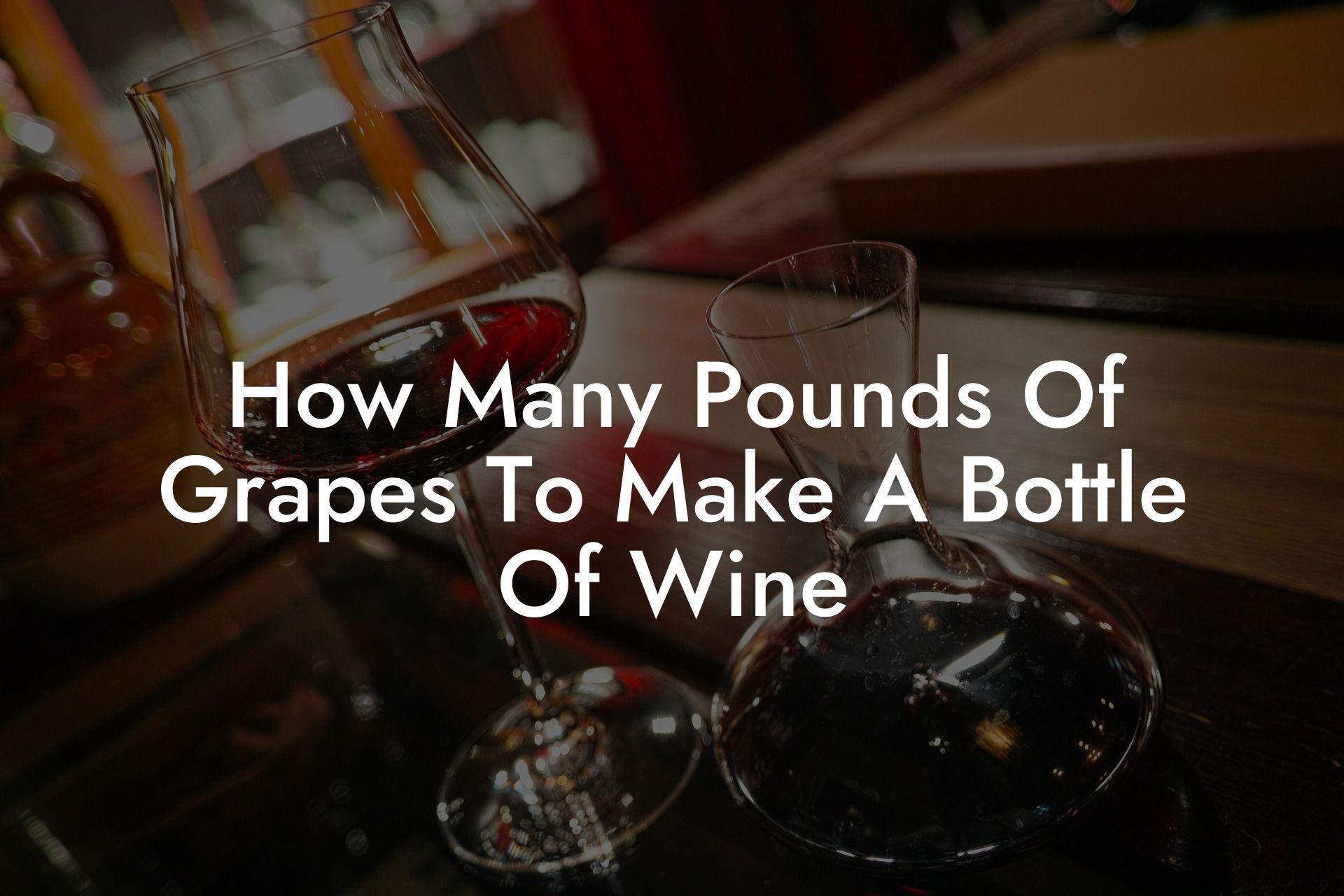Wine enthusiasts and newcomers alike often find themselves pondering the same question: Just how many pounds of grapes does it take to make a single bottle of wine? In this enlightening post, we'll dive into the answer, exploring the fascinating process of turning grapes into wine and shedding light on the varietals, harvests, and factors that go into creating your favorite bottle. Join us as we uncork the mysteries of wine production!
How Many Pounds Of Grapes To Make A Bottle Of Wine Table of Contents
The Grape-to-Wine Ratio
In general, it takes approximately 2.5 pounds (1.1 kg) of grapes to produce a standard 750-milliliter bottle of wine. However, this number is not set in stone and can vary depending on the grape variety, growing conditions, and winemaking practices.
Understanding the Variability
The number of pounds of grapes needed to produce a bottle of wine can vary due to several factors:
Do You Want to Win a Free Bottle of Wine?
Don't miss out on the opportunity to win a free bottle of wine every week.
Enter our weekly prize draw today!
- Grape Variety: Some varieties of grapes have smaller berries or lower juice yields, meaning more grapes are needed to produce a single bottle of wine. For example, producing a bottle of Pinot Noir may require more grapes than a bottle of Cabernet Sauvignon.
- Growing Conditions: The climate, soil, and overall growing conditions of a vineyard can affect the grape-to-wine ratio. Grapes grown in regions with cooler climates tend to be smaller in size and more concentrated in flavor, requiring more grapes to fill a bottle.
- Winemaking Practices: Individual winemakers have their unique methods that may influence the number of grapes used during the process. Some may press the grapes more gently, which may result in a lower yield of juice from the initial harvest. Others may use different techniques to enhance or alter the flavor profile of the wine, which may also require differing amounts of grapes.
From Vineyard to Bottle: The Winemaking Process
Understanding the process of winemaking can help to shed light on the grape-to-bottle ratio. Here's a brief overview of the steps involved in transforming grapes into wine:
- Harvesting: Grapes are handpicked or machine-harvested once they reach peak ripeness. Harvest season typically falls between late August and October, depending on the grape variety and region.
- Crushing and Pressing: The grapes are crushed and pressed to release the juice, which is then collected for fermentation. Some winemakers allow the grape skins to remain in contact with the juice to extract color, tannins, and flavors, while others remove them completely.
- Fermentation: Yeast is added to the grape juice, converting the sugars into alcohol. The length of fermentation varies but generally lasts anywhere from a few days to several weeks.
- Aging: After fermentation, the wine is typically aged in barrels, tanks, or bottles. The aging process can last from a few months to several years, depending on the winemaker's desired flavor profile and attributes of the wine.
- Bottling: Finally, the wine is bottled, sealed, and labeled, ready to make its way to your wine rack or table.
How Many Pounds Of Grapes To Make A Bottle Of Wine Example:
Imagine that a winemaker in California's Sonoma County is producing a limited-edition Pinot Noir. The winemaker has chosen to handpick the grapes and use a gentle press to extract the juice, ensuring that the delicate flavors of the Pinot Noir remain intact. Because of these unique practices, along with the varietal's naturally small berries, the winemaker finds that 3 pounds (1.4 kg) of grapes are needed to make each bottle of their Pinot Noir. As a result, only 800 cases are produced—a true treasure for Pinot Noir enthusiasts to savor and enjoy.
Now that we've raised the curtain on the grape-to-bottle journey, you might be feeling even more connected to that beloved beverage in your glass. As you uncork your next bottle, take a moment to appreciate the pounds of grapes, dedicated winemakers, and intricate processes that have led to that delightful pour. If this exploration of grape-to-wine ratios has whet your appetite for more wine wisdom, we invite you to continue reading our guides at Black Wine Club, and share your newfound knowledge with fellow wine enthusiasts for an even deeper appreciation of this captivating libation. Cheers!
Do You Want to Win a Free Bottle of Wine?
Don't miss out on the opportunity to win a free bottle of wine every week.
Enter our weekly prize draw today!












